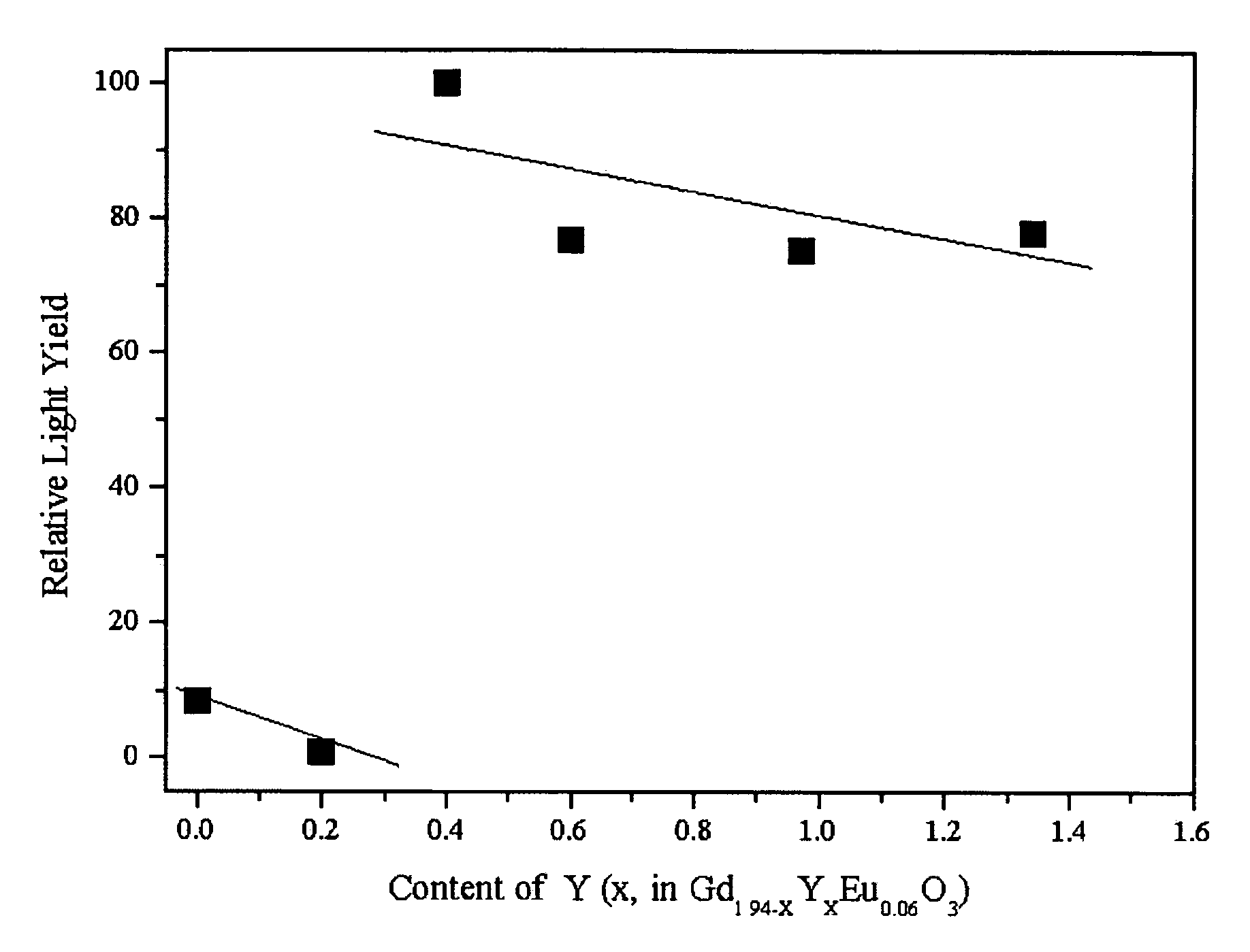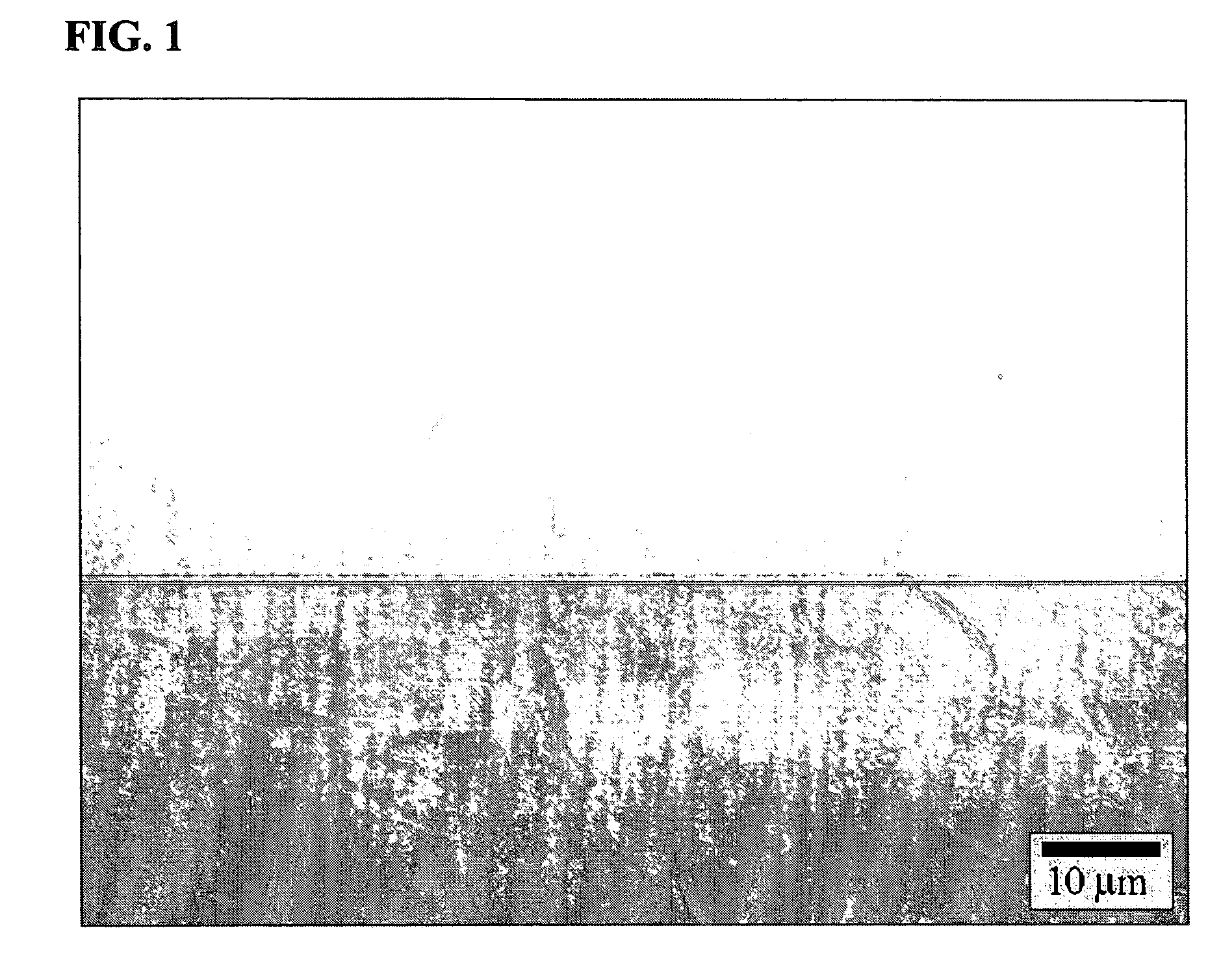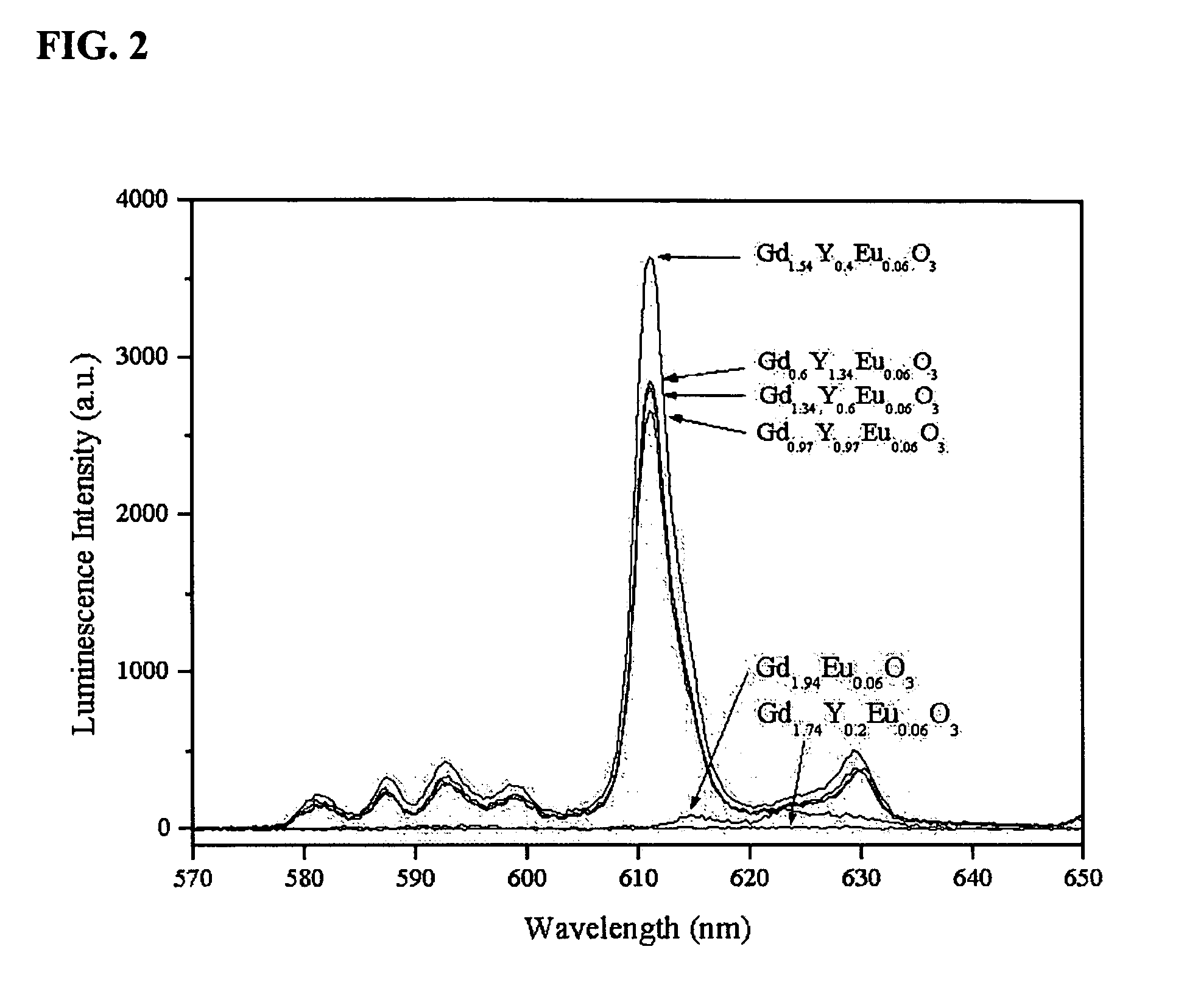Transparent polycrystalline ceramic scintillators and methods of preparing the same
a technology of transparent polycrystalline ceramics and scintillators, which is applied in the direction of chemistry apparatus and processes, and can solve the problems of limiting the quantity of gadolinium oxide substituted, the difficulty in manufacturing conventional transparent ceramic scintillators, and the inability to achieve optically transparent conditions through conventional ceramic manufacturing processes. , to achieve the effect of excellent luminescent characteristics and high light yield
- Summary
- Abstract
- Description
- Claims
- Application Information
AI Technical Summary
Benefits of technology
Problems solved by technology
Method used
Image
Examples
example 1
Synthesis of Ceramic Scintillator (Gd1.54Y0.4Eu0.06O3)
[0032]Gadolinium nitrate (13.9019 g, 0.0308 mole), yttrium nitrate (3.0641 g, 0.008 mole) and europium nitrate (0.5137 g, 0.0012 mole) were melted together with glycine (5.0798 g, 0.0667 mole) in 40 ml of distilled water (1 molar concentration) to form a solution. Viscosity increased gradually as the solution was heated on a hot-plate at over 400° C. for 10 minutes, transforming the liquid into an oxide powder through the self-sustaining combustion reaction.
[0033]The oxide powder was treated by ball milling at 50 rpm for 24 hours with a polypropylene vessel and zirconia balls using isopropyl alcohol as a solvent. The powder from this process was then kept in a hood for 24 hours to evaporate the solvent and then dried in an oven at 50° C. for more than 48 hours. After mounting the dried powder to a tube furnace (with both ends of tube furnace blocked and under vacuum conditions), the powder was heated and kept at 400° C. for 4 hou...
example 2
Synthesis of Ceramic Scintillator (Gd1.34Y0.6Eu0.06O3)
[0035]A ceramic scintillator was produced under the same conditions and through the same processes as in Example 1, except gadolinium nitrate (12.0964 g, 0.0268 mole), yttrium nitrate (4.5961 g, 0.012 mole) and europium nitrate (0.5137 g, 0.0012 mole) were melted together with glycine (5.0798 g, 0.0667 mole) in 40 ml of distilled water.
example 3
Synthesis of Ceramic Scintillator (Gd0.97Y0.97Eu0.06O3)
[0036]A ceramic scintillator was produced under the same conditions and through the same processes as in Example 1, except gadolinium nitrate (8.7564 g, 0.0194 mole), yttrium nitrate (7.404 g, 0.0194 mole) and europium nitrate (0.5137 g, 0.0012 mole) were melted together with glycine (45.0798 g, 0.0667 mole) in 40 ml of distilled water.
PUM
| Property | Measurement | Unit |
|---|---|---|
| mole fraction | aaaaa | aaaaa |
| temperature | aaaaa | aaaaa |
| pressure | aaaaa | aaaaa |
Abstract
Description
Claims
Application Information
 Login to View More
Login to View More - R&D
- Intellectual Property
- Life Sciences
- Materials
- Tech Scout
- Unparalleled Data Quality
- Higher Quality Content
- 60% Fewer Hallucinations
Browse by: Latest US Patents, China's latest patents, Technical Efficacy Thesaurus, Application Domain, Technology Topic, Popular Technical Reports.
© 2025 PatSnap. All rights reserved.Legal|Privacy policy|Modern Slavery Act Transparency Statement|Sitemap|About US| Contact US: help@patsnap.com



